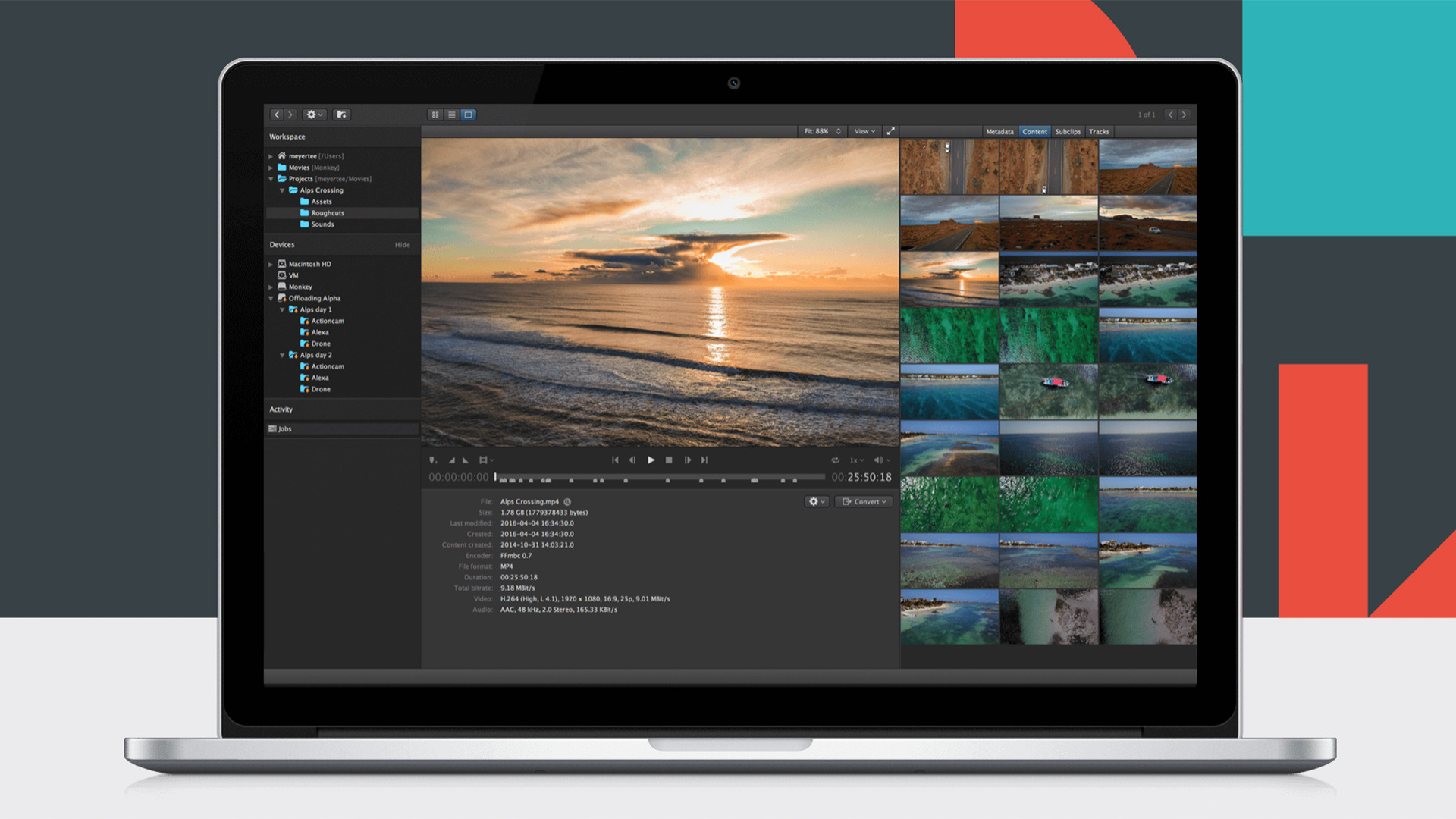
ProRes on Windows. There, that made you look! Lesspain just updated its award winning media management software.
Version 1.7 of Lesspain Software’s Kyno, now available, now offers ProRes as one of the many output codec options for its transcoding features. OK, it’s not the first piece of software to offer ProRes encoding on Windows, but it’s massively helpful to see the feature emerge in a piece of software that already supported more or less everything else. There are two versions of Kyno; the standard version at £139, or the premium option at £319. Happily, both of these options are perpetual licenses with a year of updates and an effectively half price renewal at the end of each year to keep getting new versions.
It’s worth a quick aside here to mention that Lesspain’s attitude to updates has, so far, been pretty robust. In the last few years Kyno has grown significantly, from being a basic-but-effective media management tool to a point where it’s snapping at the heels of some rather expensive pieces of software. Arguments over subscription and perpetual licenses abound, but there’s not much arguing the fact that a perpetual license gives a software house a more direct incentive to keep adding things, and Lesspain certainly have. The last couple of years have yeilded big new features including verified backup, LUTs and Red support. Perhaps at some point Lesspain will run out of things to add, though there’s no sign of that yet.
The full-fat version adds more or less what we’d expect – the proprietary codecs, including support for Red raw, plus P2, DNxHD, and XDCAM output. A lot of the network upload and NLE-compatible delivery options are also exclusive to Kyno Premium. The new version is updated to improve metadata handling in both Premiere and Final Cut, and in Kyno’s integration with Frame.io. ProRes, despite often being a fairly premium feature on Windows, is actually in the standard version. Regardless, the standard version remains relevant for, say, a digital imaging technician or camera crew who don’t need a lot of the delivery tools.
More or less the only feature it lacks is a Silverstack-style grading interface to build LUTs on the spot; that’s often done only by the very highest-end shows who have the time to spend, and therefore serves a small market, but it wouldn’t hurt to see it in the future. Grading becomes a fairly complex problem if we start to include live grading and the need to interface with an wide range of monitors and other devices, to the point where any software house might shy away from doing it, but a simple interface for creating a LUT or an ASC CDL might be a nice idea for the future.
Lightweight software
The best thing about Kyno, though, is that it’s lightweight, and lightweight in the best possible way. There are no requirements for a lengthy search of the storage or a huge SQL database, no private storage, no time-consuming ingest process or duplication of data. It’ll do duplication for camera offload if you want it to, but otherwise it works on the data where it is. Metadata is stored alongside the data it describes. There’s optionally some caching of extracted metadata, but that’s fairly lightweight, and like audio peak data files for an NLE it’ll be recreated if it’s ever deleted (naturally at some cost to performance.) The company answers the question as to whether Kyno is a media asset management system with an entirely equivocal “sort of,” but if it manages to be sort of a MAM without almost any of the overhead of a MAM, that’s impressive on its own.
There’s too many features, and too many new features, to list exhaustively – it’d just be a copy-and-paste of the press release - so best head on over to Lesspain’s site and have a look.